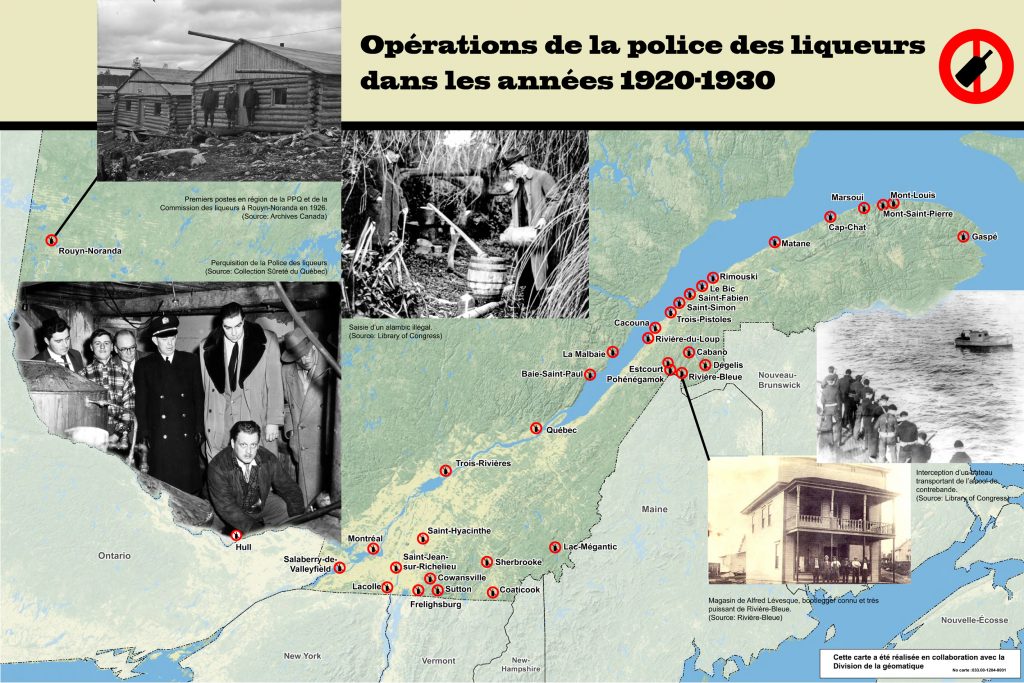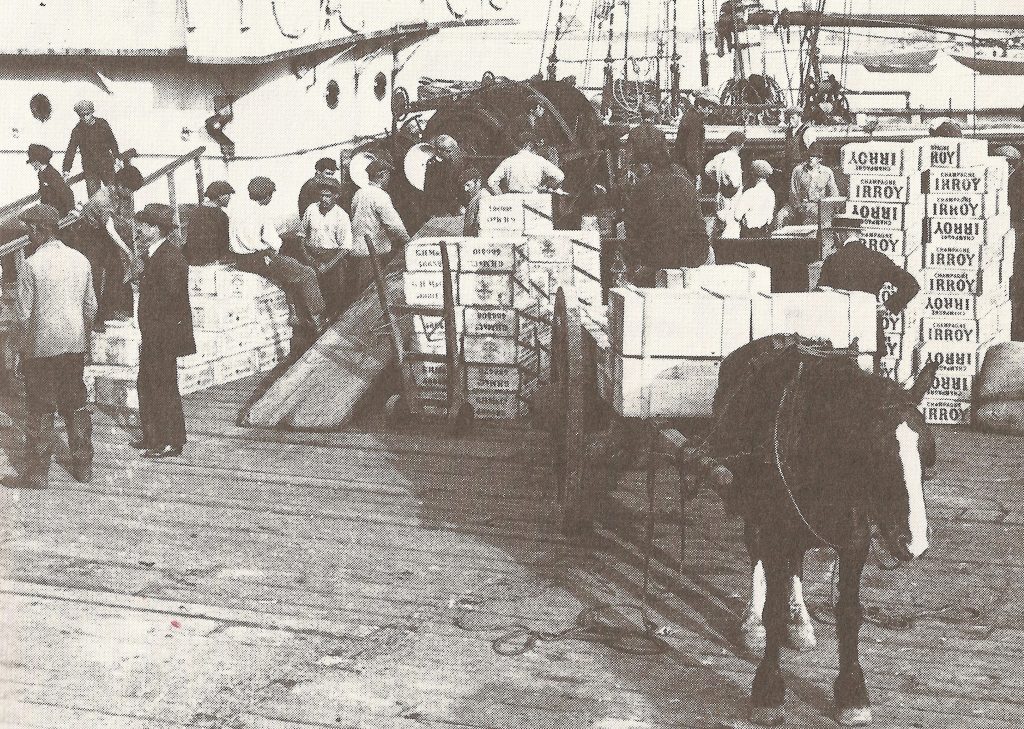The border regions, a real smuggler’s dream
At the beginning of the 20th century, French Canadians were rather poor. By necessity, and even before Prohibition, they much preferred contraband and home-made alcohol to the taxed and therefore more expensive products sold by the state. Moreover, after 1921, only municipalities with a population of over 5,000 could have a branch of the Liquor Commission. This, plus the high demand for illegal alcohol, which was largely maintained by American organized crime, explains why some rural municipalities became very active in smuggling. The border between Canada and the United States was the longest in the world, which made policing it difficult and smuggling all the easier.
This map clearly shows the extent of liquor police operations in Quebec in the 1920s and 1930s:
Smuggling in Quebec became well established during the 1920s and 1930s with the help of the Saint-Pierre-and-Miquelon islands, a small French territory located approximately 20 km south of Newfoundland in the North Atlantic. Because it was governed by French regulations, it was not affected by prohibition. Word spread in the “alcohol business” that St. Pierre-and-Miquelon could be used as a transshipment point from which alcohol could be transferred to Canada and the United States.



